Affiliate links on Android Authority may earn us a commission. Learn more.
Samsung Galaxy Watch 4 and Galaxy Watch 4 Classic: Specs, prices, and more
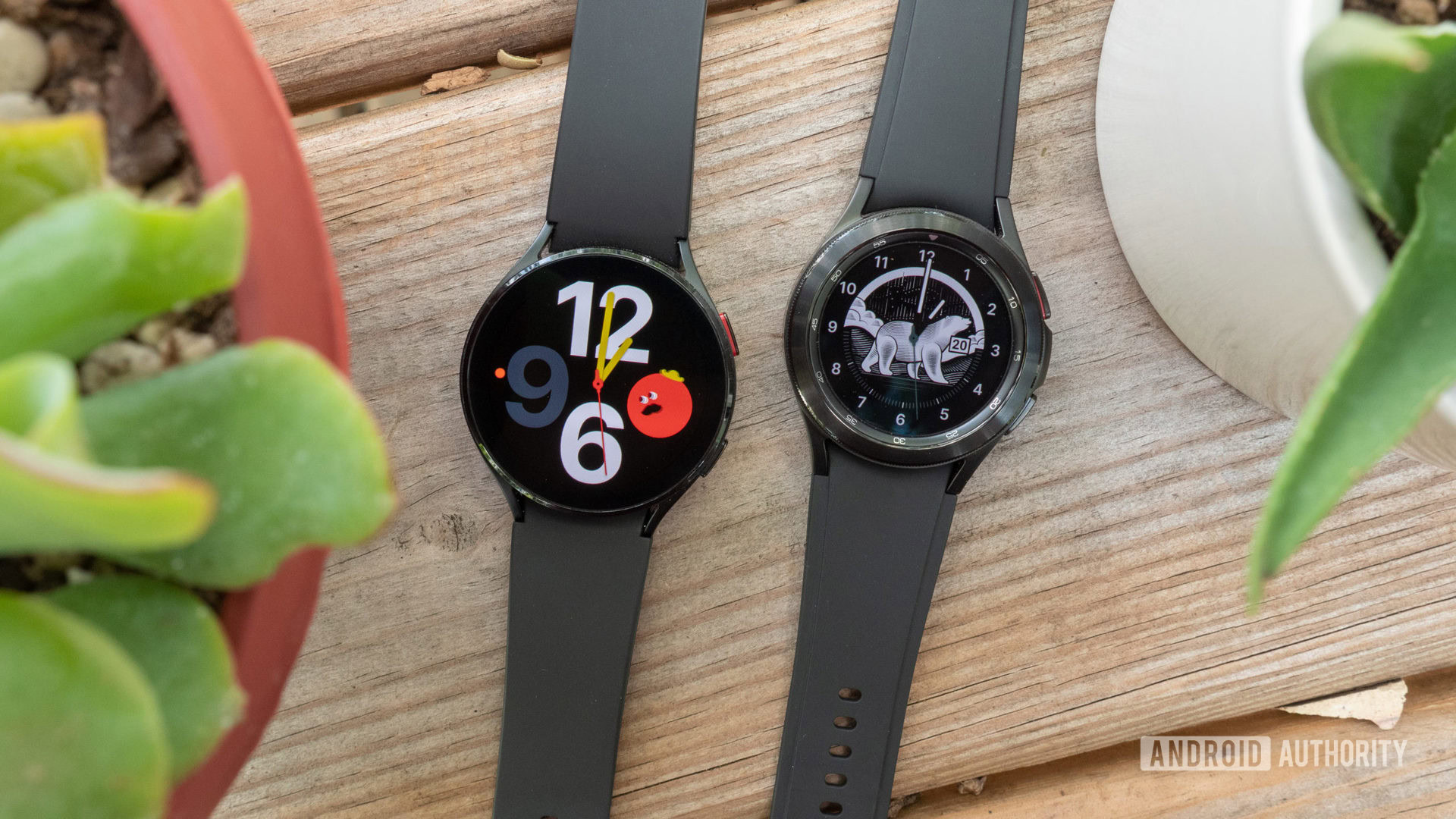
With the Galaxy Watch 4 and Galaxy Watch 4 Classic, Samsung took a big leap into the unknown. The company canned its familiar Tizen operating system in favor of the refreshed Wear OS, which it co-developed with Google. Before it was outdone by the Galaxy Watch 5 series, and now the Galaxy Watch 6 series, we considered the Series 4 lineup among the best smartwatches for Android users. Here’s everything you need to know about the Samsung Galaxy Watch 4 and Galaxy Watch 4 Classic.
Samsung Galaxy Watch 4 and Galaxy Watch 4 Classic at a glance


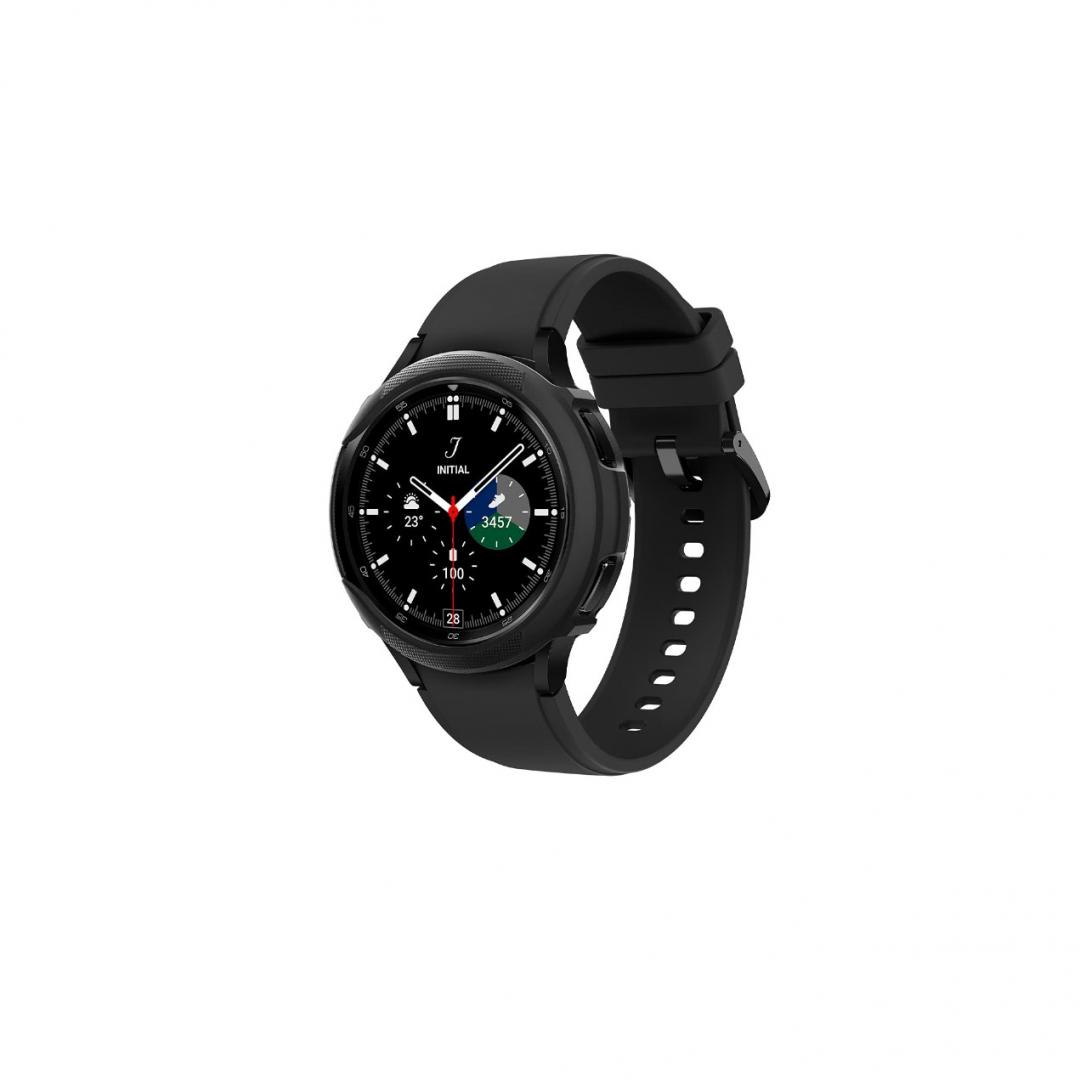

Samsung launched the Galaxy Watch 4 and the Galaxy Watch 4 Classic, on August 11, 2021. For the most part, both Samsung smartwatches feature similar specs and design cues but are built for different users. The Samsung Galaxy Watch 4 is the spiritual successor to the Galaxy Watch Active 2. It’s the sporty one, comes in better colorways, and has an overall smaller form factor. The Samsung Galaxy Watch 4 Classic is the direct successor to the Galaxy Watch 3. It’s bigger, classier, and simply offers more.
The base model Galaxy Watch still exists with upgrades in the Galaxy Watch 5 and 6 series. The Classic model, with a physical rotating bezel we adore, was dropped from the 5 series but features again in the 6 series. The Galaxy Watch 5 Pro is an outdoor-orientated fork in the lineup.
Both 4 series devices have bigger, brighter displays than earlier generations, offer longer battery life, and have health features that aim to give you a more holistic view of your current health conditions. These were also originally the very first two devices with Wear OS 3 on board, but they are now upgrading to Wear OS 4-based One UI 5 Watch in select regions.
If you decide to stick with this older generation, there are a few different versions to shop. The Galaxy Watch 4 is available in two different sizes — 40mm and 44mm. Meanwhile, you’ll find 42mm and 46mm variants of the Galaxy Watch 4 Classic. There’s a $30 difference between the two sizes in both cases. You also have the choice between Bluetooth-only or LTE variants, with another $30 surcharge for the latter.
Are the Galaxy Watch 4 or Galaxy Watch 4 Classic worth buying?
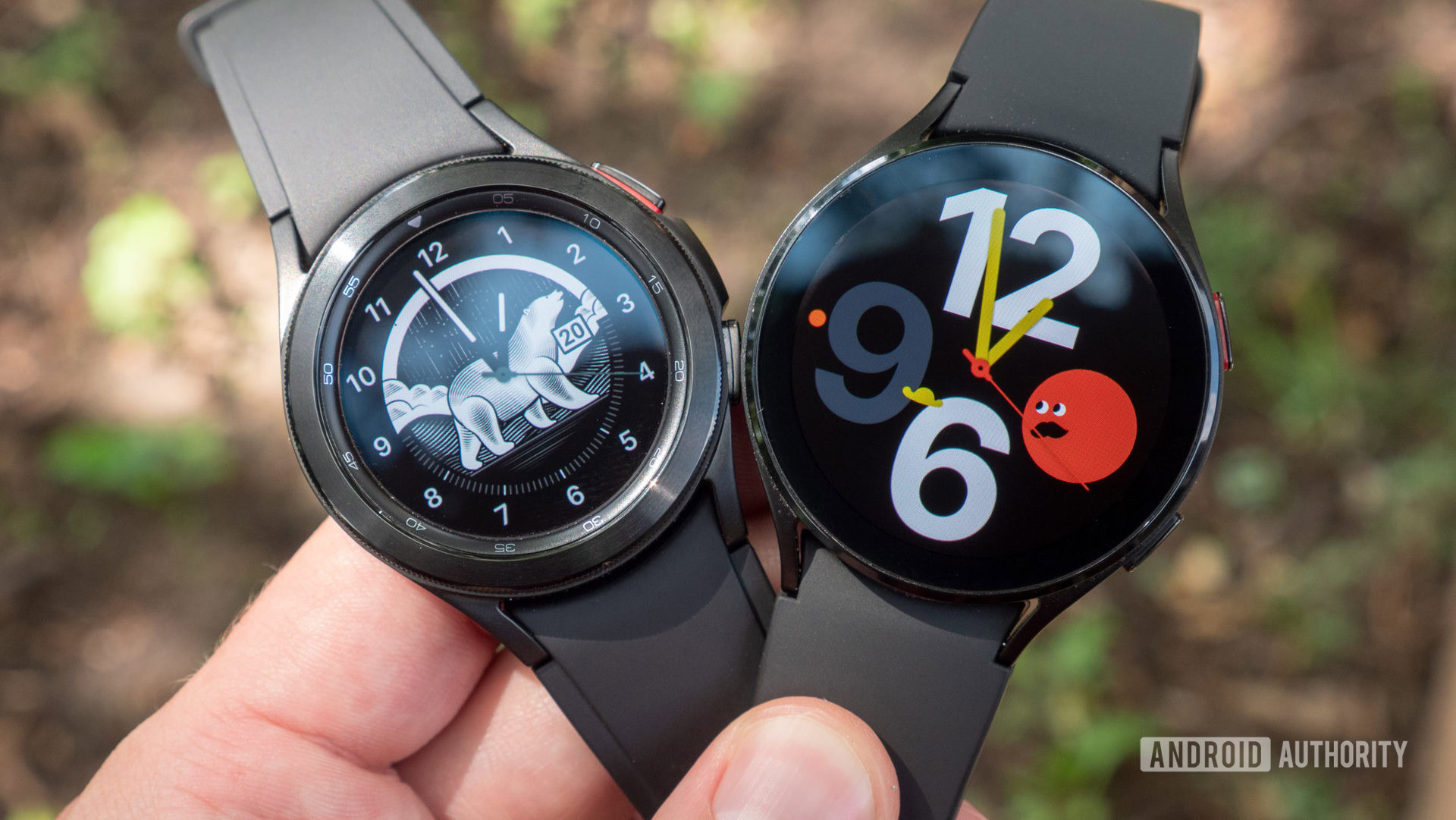
If you’re looking for the best Wear OS smartwatch you can buy, the Galaxy Watch 6 series is currently it, with the Galaxy Watch 5 Pro making a solid case for itself as well. However, the Galaxy Watch 4 and 4 Classic are still very impressive watches worth considering if you want to save some cash. They share many top features with their younger siblings and continually see software updates. They are also incredibly user-friendly from setting up to using your Galaxy Watch 4.
With two distinct smartwatches in the lineup, users have a choice to make. The Watch 4 and Watch 4 Classic are quite similar. The Galaxy Watch 4 is smaller, thinner, and lighter, and uses a capacitive touch-based virtual rotating panel. The Classic features a physical rotating bezel which, as mentioned, you won’t find on either device in the series 5 lineup, but will on the Galaxy Watch 6 Classic.
Whether you choose the Galaxy Watch 4 or 4 Classic you will get the same display sizes across the board. You’ll also get the same set of features, similar internal hardware, and an identical software experience. These are some of the most fully-featured smartwatches you can get.
Adding to the breadth of fitness tracking and health monitoring features available, the Galaxy Watch 4 series also comes with an optical heart rate sensor (PPG), electrocardiogram (ECG), and bioelectrical impedance (BIA) sensor. There’s an unfortunate catch here in that you’ll need a Samsung phone to use some of these features (more on this later).
Depending on the size and connectivity options you choose, the Galaxy Watch 4 series devices can get pricey. That being said, they are also very likely to be found for much less now that the Galaxy Watch 6 is here. What if you already have a Galaxy Watch 4? Head over to our Galaxy Watch 6 vs Galaxy Watch 4 comparison guide to find out whether it’s worth upgrading to the newest watches.
What reviewers are saying about the Galaxy Watch 4 and Watch 4 Classic
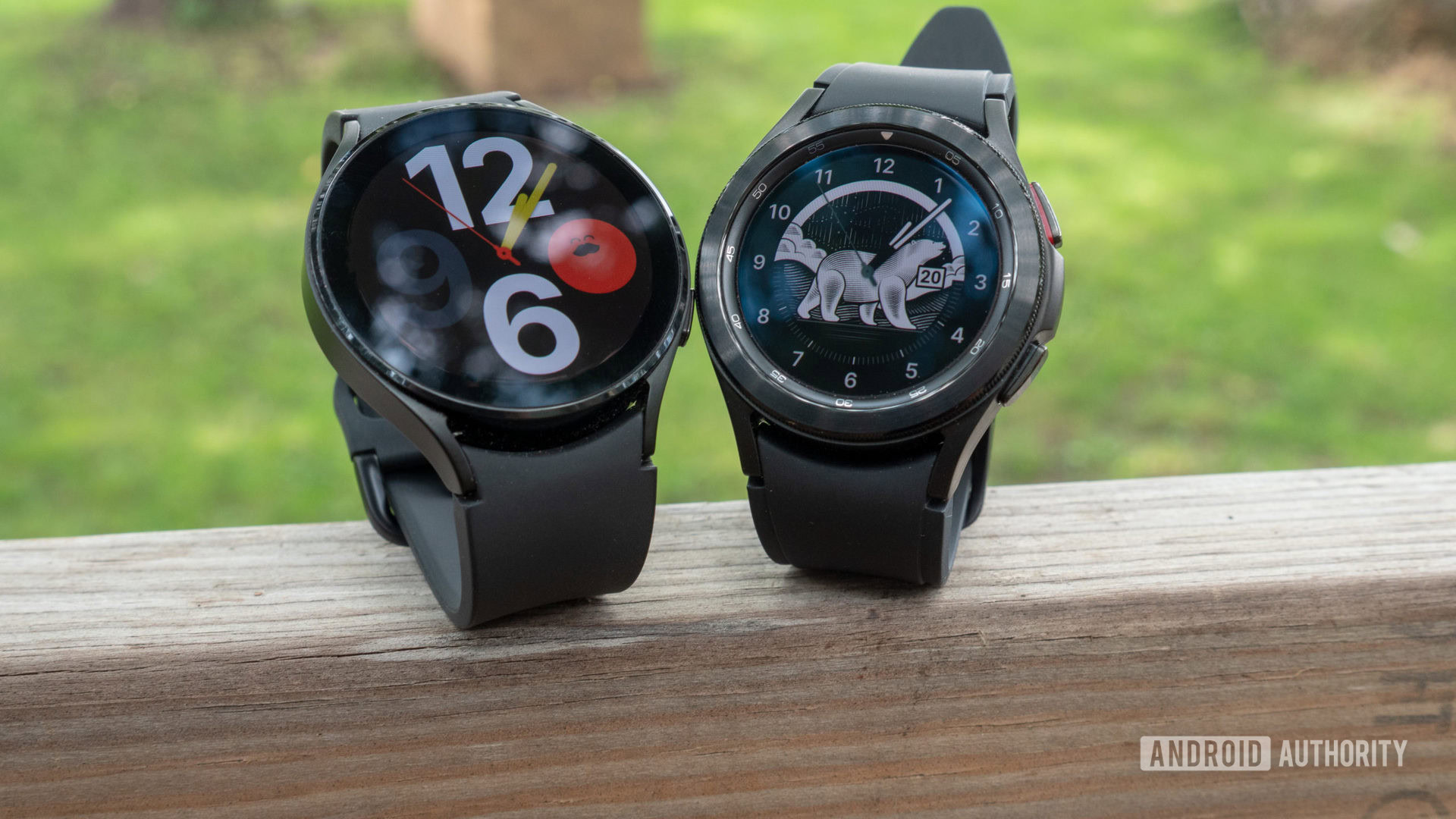
In his Galacy Watch 4 review for Android Authority, Jimmy Westenberg says, “all of the smartwatch features work well, the fitness features are abundant and improved, and both devices can be customized to your particular size and style.” However, he adds that they aren’t perfect.
There aren’t too many common Galaxy Watch 4 problems, but the lack of device support is disappointing, with features like ECG readings and blood pressure monitoring only available with Samsung phones. The software experience is good, but it’s more Samsung than Google. Even still, Jimmy says the Samsung Galaxy Watch 4 “is a fantastic smartwatch that I wouldn’t hesitate to recommend to any Android user.”
What other reviewers around the web are saying about the Samsung Galaxy Watch 4 and Watch 4 Classic
- Tech Radar’s James Peckham said that the Galaxy Watch 4 is “a great choice for anyone who owns a Galaxy smartphone.” He adds that it’s still worth getting if you don’t have a Samsung phone, but you will miss out on features like blood pressure and ECG measurements. Peckham also says battery life wasn’t a huge concern and that the watch has “good fitness features, strong battery life, and a comfortable design.” However, the compatibility issues may be disappointing for potential buyers.
- Tom’s Guide’s Kate Kozuch called the Galaxy Watch 4 “the first Wear OS smartwatch worth your money.” She adds that it’s an excellent upgrade with design updates, refreshed software, and a breakout BIA (bio-impedance analysis) system. And the fact that the series is cheaper than its predecessors is surprising but welcome. She would have preferred better and more consistent battery life and finds that the Wear OS is missing some key features. That said, she concludes that “the Samsung Galaxy Watch 4’s success comes down to integrating as obnoxiously well with Galaxy devices as the Apple Watch does with the greater Apple ecosystem.”
- SamMobile’s Danny D. says the hardware upgrades make the Galaxy Watch 4 series noticeably fast and that “the hardware improvements alone justify the upgrade” if you have any older smartwatch. The even more exciting update is on the software side, saying, “the work that Samsung has done with Google on Wear OS will benefit the entire Android smartwatch ecosystem.” He adds that Samsung seems to have priced the watches to be more attainable and that they offer “incredible value for money with great new features, a completely new chipset, and access to Android’s vast library of apps.”
Samsung Galaxy Watch 4 hardware and design
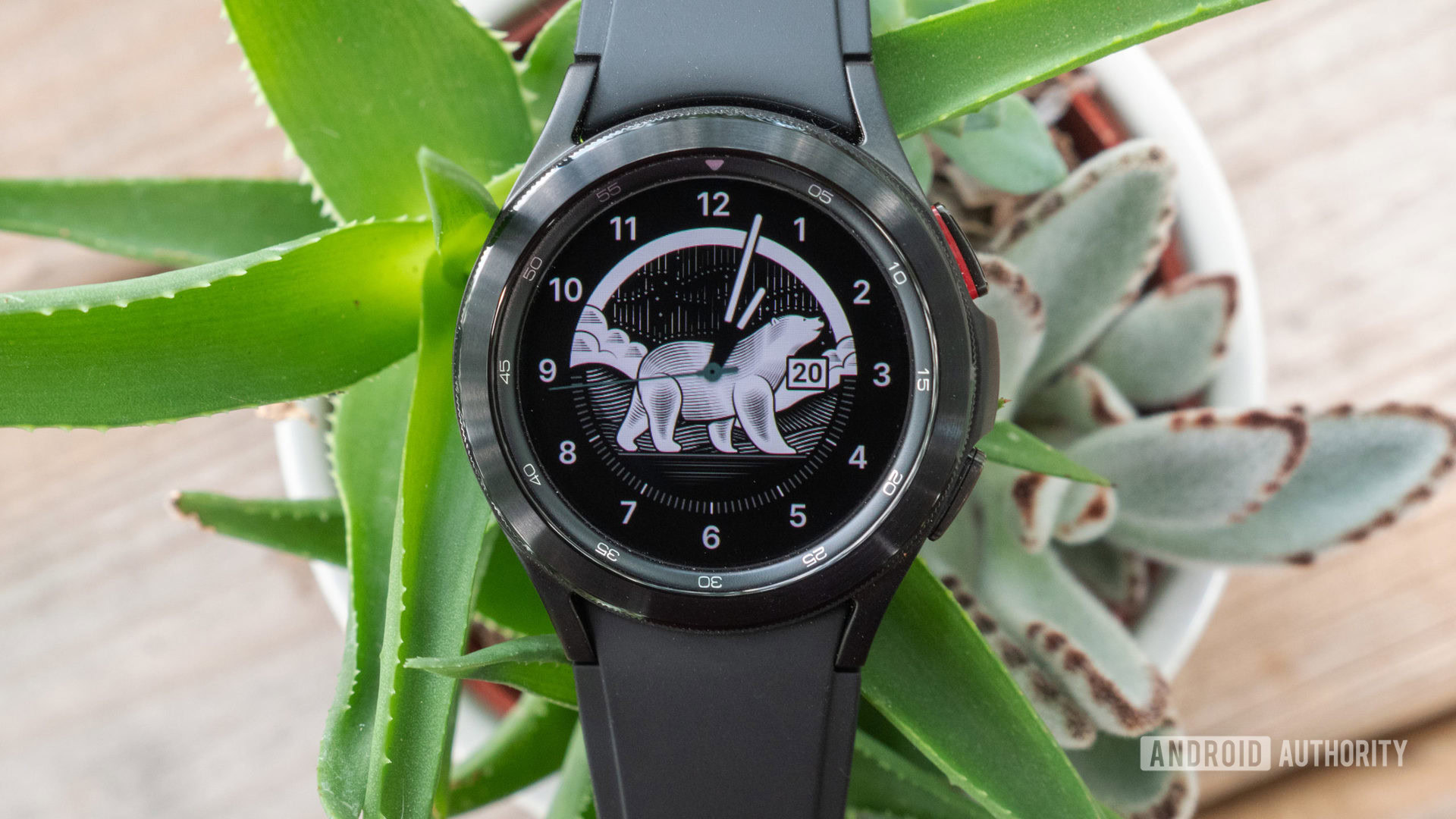
The Galaxy Watch 4 and Classic models offer different designs and are made for different users. Both Galaxy Watch 4 models offer thinner cases than their respective predecessors.
The Galaxy Watch 4 is made of aluminum, and the Watch 4 Classic has a stainless steel case. You’ll also notice the bigger overall footprint of the Classic model due to the rotating bezel for navigating around the interface. You can navigate around the regular Galaxy Watch 4 by swiping along the side of the watch case, but most users will likely just use traditional swipes and taps on the touchscreen.
The Galaxy Watch 4 and Watch 4 Classic are for different users, but you'll get a great-looking device whichever model you choose.
The Watch 4 and Watch 4 Classic both come in two sizes. The standard model can be configured with a 44mm case and a 1.36-inch display or a 40mm model with a 1.19-inch display. The Watch 4 Classic comes in 46mm or 42mm case sizes, with the same display sizes as the standard Watch 4. All displays in question are AMOLED panels, and they all offer higher pixel densities than their predecessors.
The Galaxy Watch 4 and Watch 4 Classic also use the same 20mm watch straps despite the different sizes. The silicone straps you get with the watch aren’t the best, but there are plenty of excellent third-party watch bands available.
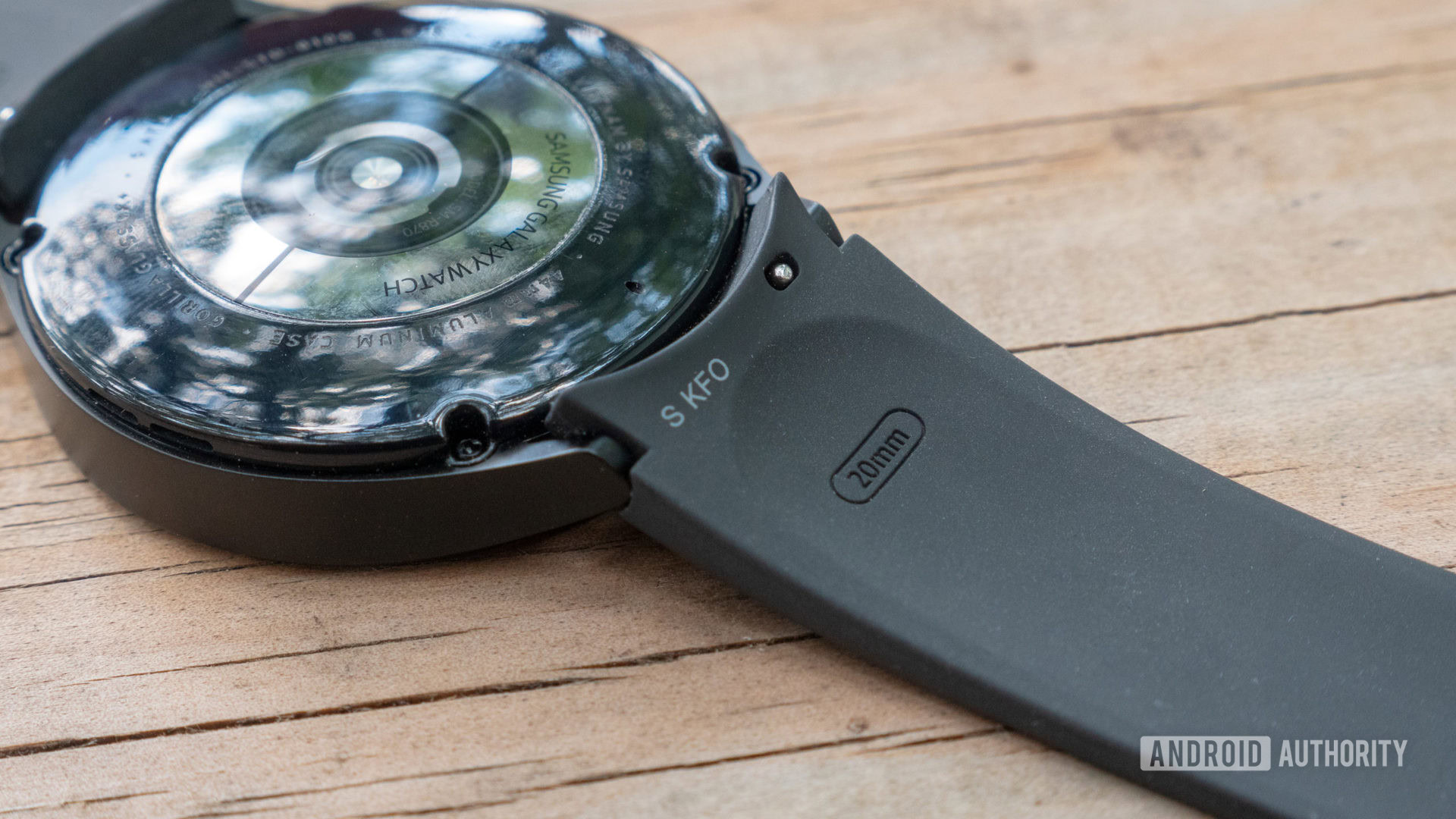
Both of the bigger-sized watches come with 361mAh batteries, while the smaller models have 247mAh batteries. Samsung says all Galaxy Watch 4 devices should last around 40 hours. This depends on your usage, though. In testing, we managed to push it to that mark. With more than average usage, we needed to charge the watch every day. When you’re low on battery, leaving the watch on the charger for 30 minutes will supposedly earn you 10 hours of usage. Charging from 0-100% will take about two hours, however, which is quite slow.
Samsung upgraded the SoC, RAM, and storage with the Galaxy Watch 4 compared to earlier watches. All models come with Samsung’s 5nm Exynos W920 chipset, 1.5GB of RAM (up from 1GB), and 16GB of onboard storage (up from 8GB). At the time, the chipset was a big deal, though. Not only was it the first 5nm chipset in a Galaxy watch, but the company also said it offers a 20% increase in CPU performance. The chip is made with two Cortex-A55 cores and a Mali-G68 GPU. Coupled with 50% more RAM, the Galaxy Watch 4 has no problem moving through Wear OS 3 software.
Good news for always-on display (AOD) users: the chip boasts a dedicated low-power display processor (the Cortex-M55), allowing the main CPU to stay off when in situations that require a small amount of power.
Samsung Galaxy Watch 4: Fitness and health features
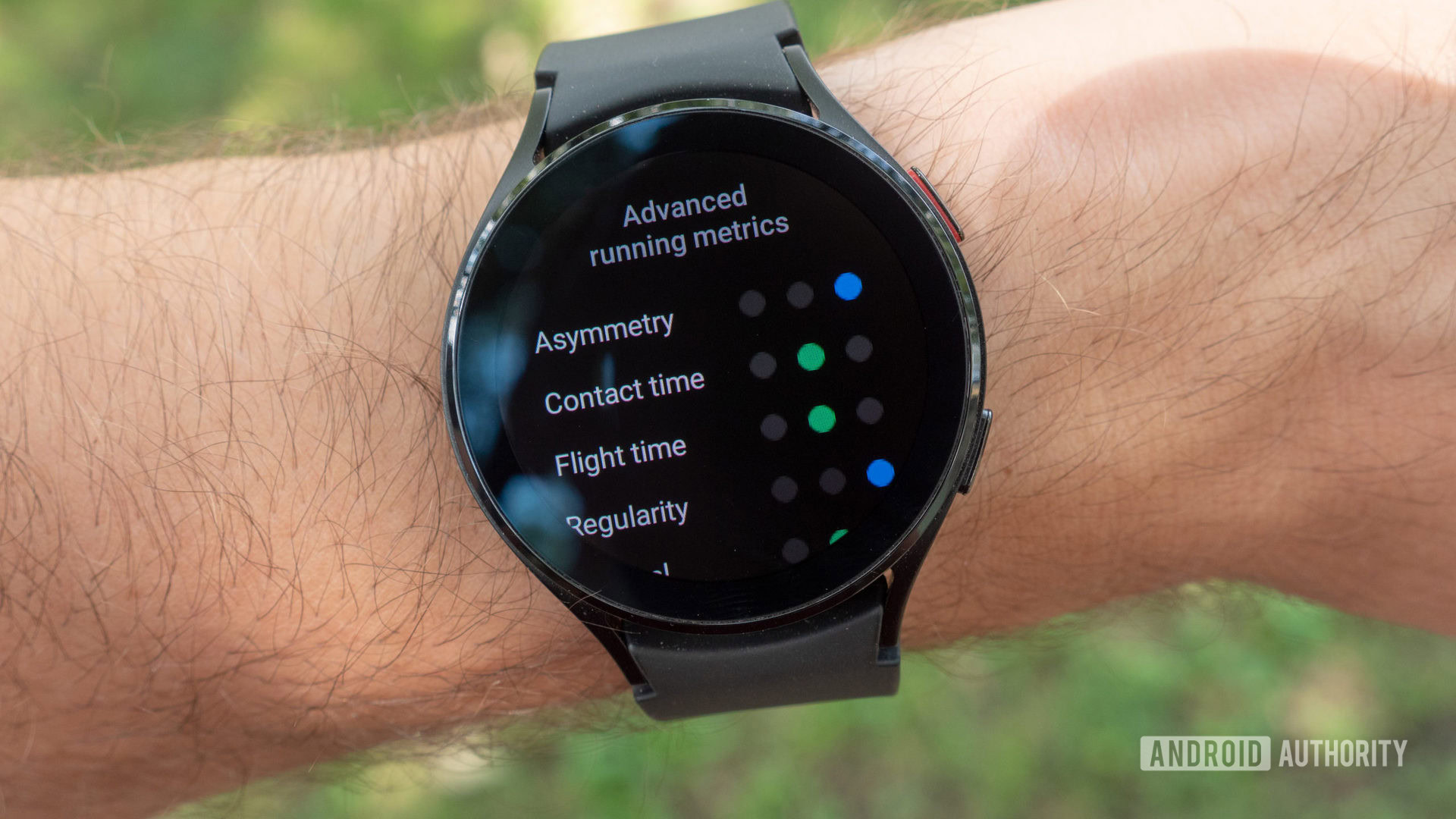
Samsung always tries its best to incorporate all the fitness and health features you could want, but it can fall short at times. The BioActive sensor on the Galaxy Watch 4 line provides more accuracy than previous watches. It comprises three hardware sensors: an optical heart rate sensor (PPG), an electrocardiogram (ECG), and a bioelectrical impedance (BIA) sensor.
To be clear, the heart rate sensor and ECG hardware are the same sensors that we tested on the Galaxy Watch 3 and Galaxy Watch Active. However, the Galaxy Watch 4 series features an updated algorithm to make up for earlier issues. We were impressed with the Galaxy Watch 4’s accuracy during testing.
Samsung's improved algorithms help garner more accurate heart rate data — one of the Galaxy Watch 3's main pitfalls.
The devices’ BIA sensors are worth talking about, as well. After 15 seconds of recording, your Galaxy Watch 4 will attempt to determine certain body composition metrics, including your skeletal muscle, basal metabolic rate (BMR), water retention, and body fat percentage. Users can also set personal goals for their body composition analysis. Through a partnership with Centr: By Chris Hemsworth, your watch will even provide insights and tips for reaching your body composition goals.
To get proper readings, you’ll need to provide some manual data like your height and weight. This was fairly accurate compared to our smart scale, but we couldn’t compare it to the accurate information you’d get with a professional body composition analysis machine.
Sleep tracking is important for many users, and since the Galaxy Watch 4 can last over a day on a single charge, it’s likely many owners will wear their watches to bed. The Galaxy Watch 4 series tracks sleep stages overnight and provides you with a sleep score in the morning. Additionally, Samsung provides personalized sleep coaching. After four to five weeks, the program can help you build better sleep habits benefitting your overall wellness.
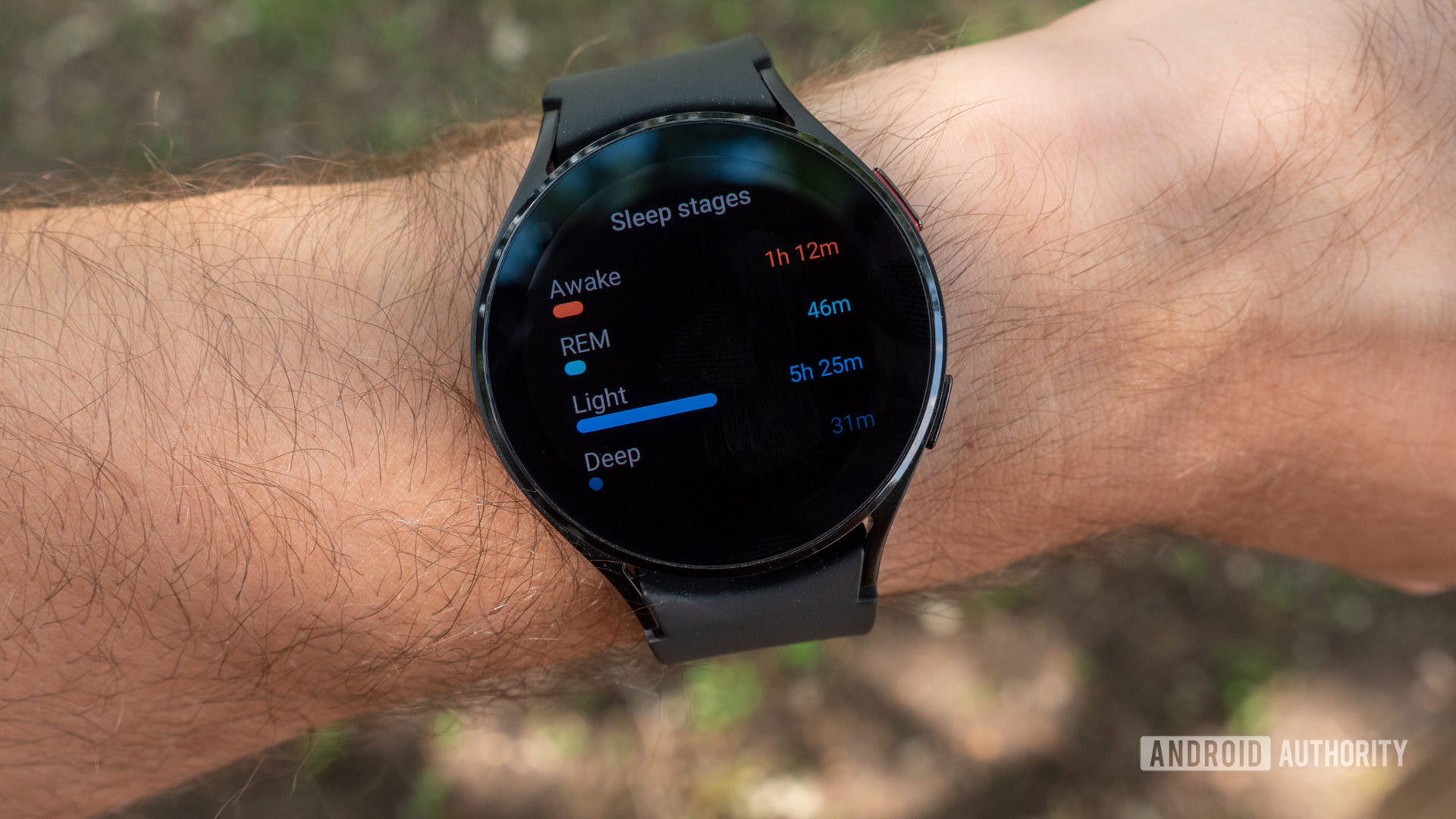
If you own a Galaxy smartphone, the watch also works in tandem with your phone to provide snoring detection in conjunction with blood oxygen readings. The smartphone can detect your snoring throughout the night and the watch records blood oxygen data every minute instead of every 30 minutes as we usually see on fitness watches. You can find information about these data fields each morning in the Samsung Health app.
On the fitness-tracking front, the Samsung Galaxy Watch 4 series offers carryover features like a digital running coach (which we loved on the Galaxy Watch 3) and VO2 max data. However, Galaxy Watch 4 users can also view % of VO2 Max values while running, and adjust their workload in real-time. For safer cycling, users can also see their heart rate and calories, as measured by the Galaxy Watch 4, right on their mounted phone screen. The watches also offer runners and cyclists support for interval training. Finally, automatic workout detection locks on much faster in these devices compared to older models. After a workout, users can access information on moisture loss as well as measure their heart rate recovery.
Samsung Galaxy Watch 4 vs Galaxy Watch 3: What’s new?
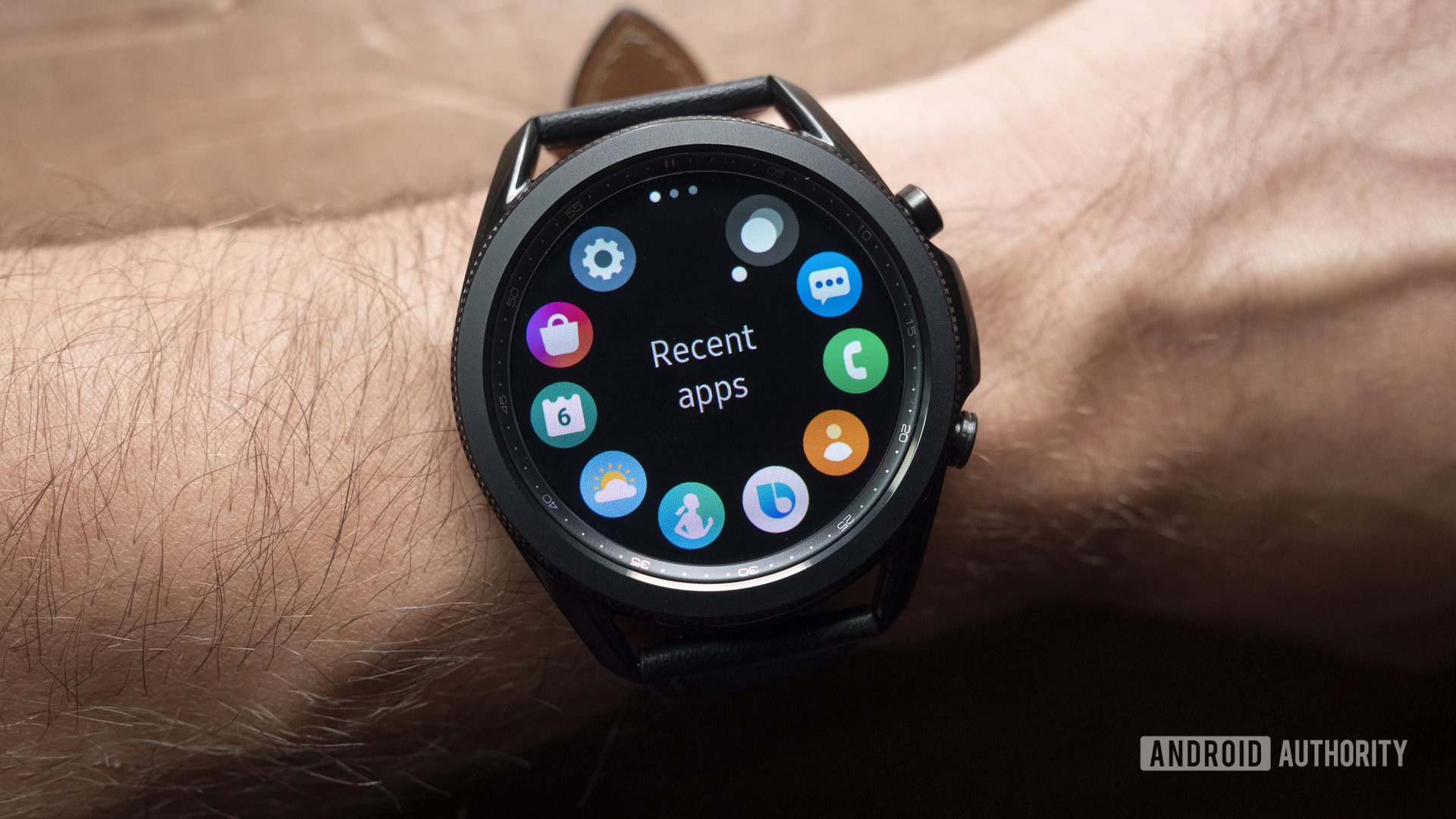
The Watch 4 series comes with two screen sizes, measuring 1.2-inch and 1.4-inch across. The physical rotating button gives the Classic model a larger watch face, with 46mm and 42mm options. The standard model features 44mm and 40mm faces. The Classic is also thinner and lighter than the Galaxy Watch 3. For the most comfortable feel, the standard Watch 4 is the thinnest and lightest of the lot.
Apart from the design differences, the Watch 4 and Watch 4 Classic are identical. So, we’ll pit the Classic Samsung Galaxy Watch 4 vs the Galaxy Watch 3 for the rest of this comparison. The rotating bezel returns and the only notable aesthetic difference is the buttons. They remain on the right edge of the watch but are flatter and more elongated this time around.
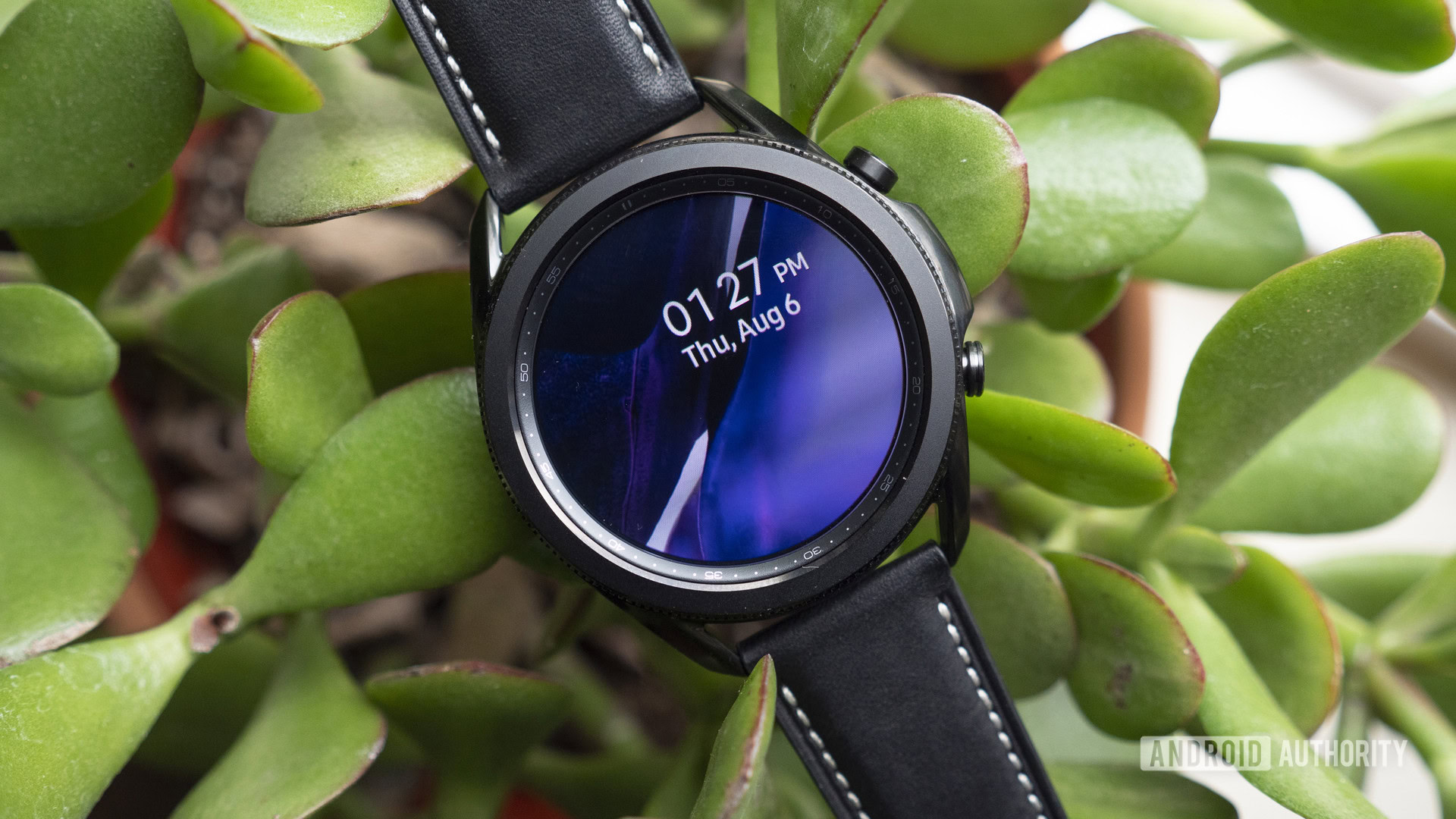
There are plenty of internal upgrades, though. The Galaxy Watch 4 series comes with 1.5GB of RAM and 16GB of storage, compared to the 1GB of RAM and half the storage with the Watch 3. If you’re looking to store a lot of music on the watch, which you can do with both YouTube Music and Spotify, the Watch 4 series is the way to go.
A newer chip brings noticeable performance improvements as well. The Galaxy Watch 4 series comes with Samsung’s 5nm Exynos W920 SoC, which reportedly brings a 20% faster CPU and 10x GPU performance over the Galaxy Watch 3’s Exynos 9110. The larger models of the Galaxy Watch 4 and Watch 4 Classic when the battery capacity battle. They come with 361mAh batteries, compared to the 341mAh unit of the larger Watch 3. However, the smaller Watch 4’s and the Watch 3 keep the same 247mAh battery.
Of course, the biggest change here is the software experience with the Galaxy Watch 4. It’s not as different at first glance as you might think. Samsung’s One UI Watch bears a striking resemblance to the Tizen OS running on the Galaxy Watch 3 — except that it is far more capable. We’ll talk more about Wear OS 3 below, but it’s worth noting that the Galaxy Watch 3 will not get the software.
As good as the Galaxy Watch 3 was, its health-tracking abilities weren’t the best. Heart rate tracking and sleep tracking were unreliable, and some fitness tracking features were hit-and-miss. The Galaxy Watch 4 not only improves health tracking across the board but adds additional sensors to the mix. You get body composition analysis with the BIA sensor, blood pressure monitoring, and ECG measurements. There’s a pretty significant catch, though. You’ll need a Samsung phone to see this data, and blood pressure monitoring is only available in Australia for now.
The Galaxy Watch 4 Classic is priced cheaper than the Galaxy Watch 3’s launch price as well. The latter launched at $399 and is currently available for around $340. Instead, you can get the base model of the Classic for $349. If you’re looking to save more, the $249 starting price of the standard Watch 4 is quite compelling. These prices are likely to drop even further now that the Galaxy Watch 5 series exists as well.
Samsung Galaxy Watch 4 specs
| Samsung Galaxy Watch 4 | Samsung Galaxy Watch 4 Classic | |
|---|---|---|
Display | Samsung Galaxy Watch 4 44mm: 1.36-inch Super AMOLED 450 x 450 resolution 330ppi Corning Gorilla Glass with DX+ 40mm: 1.19-inch Super AMOLED 396 x 396 resolution 330ppi Corning Gorilla Glass with DX+ | Samsung Galaxy Watch 4 Classic 46mm: 1.36-inch Super AMOLED 450 x 450 resolution 330ppi Corning Gorilla Glass with DX 42mm: 1.19-inch Super AMOLED 396 x 396 resolution 330ppi Corning Gorilla Glass with DX |
Dimensions and weight | Samsung Galaxy Watch 4 44mm: 44.4 x 43.3 x 9.8mm 30.3g 40mm: 40.4 x 39.3 x 9.8mm 25.9g Compatible with 20mm straps | Samsung Galaxy Watch 4 Classic 46mm: 45.5 x 45.5 x 11mm 52g 42mm: 41.5 x 41.5 x 11.2mm 46.5g Compatible with 20mm straps |
Colors and materials | Samsung Galaxy Watch 4 Aluminum case Black, Silver, Green (44mm only), Pink Gold (40mm only) | Samsung Galaxy Watch 4 Classic Stainless steel case Black, Silver |
Battery | Samsung Galaxy Watch 4 44mm: 361mAh 40mm: 247mAh WPC-based wireless charging | Samsung Galaxy Watch 4 Classic 46mm: 361mAh 42mm: 247mAh WPC-based wireless charging |
Processor | Samsung Galaxy Watch 4 5nm Samsung Exynos W920 Dual-core 1.18GHz | Samsung Galaxy Watch 4 Classic 5nm Samsung Exynos W920 Dual-core 1.18GHz |
RAM | Samsung Galaxy Watch 4 1.5GB | Samsung Galaxy Watch 4 Classic 1.5GB |
Storage | Samsung Galaxy Watch 4 16GB | Samsung Galaxy Watch 4 Classic 16GB |
Connectivity | Samsung Galaxy Watch 4 LTE (available in select models) Bluetooth 5.0 Wi-Fi 802.11 a/b/g/n 2.4+5GHz NFC GPS/GLONASS/Beidou, Galileo | Samsung Galaxy Watch 4 Classic LTE (available in select models) Bluetooth 5.0 Wi-Fi 802.11 a/b/g/n 2.4+5GHz NFC GPS/GLONASS/Beidou, Galileo |
Sensors | Samsung Galaxy Watch 4 Accelerometer Barometer Gyroscope Geomagnetic sensor Ambient light sensor Samsung BioActive sensor: optical heart rate (PPG), electrocardiogram (ECG), bioelectrical impedance analysis sensor (BIA) | Samsung Galaxy Watch 4 Classic Accelerometer Barometer Gyroscope Geomagnetic sensor Ambient light sensor Samsung BioActive sensor: optical heart rate (PPG), electrocardiogram (ECG), bioelectrical impedance analysis sensor (BIA) |
Durability | Samsung Galaxy Watch 4 5ATM + IP68 MIL-STD-810G | Samsung Galaxy Watch 4 Classic 5ATM + IP68 MIL-STD-810G |
Software | Samsung Galaxy Watch 4 Wear OS Samsung One UI Watch | Samsung Galaxy Watch 4 Classic Wear OS Samsung One UI Watch |
Compatibility | Samsung Galaxy Watch 4 Android | Samsung Galaxy Watch 4 Classic Android |
What does Wear OS bring to the table?
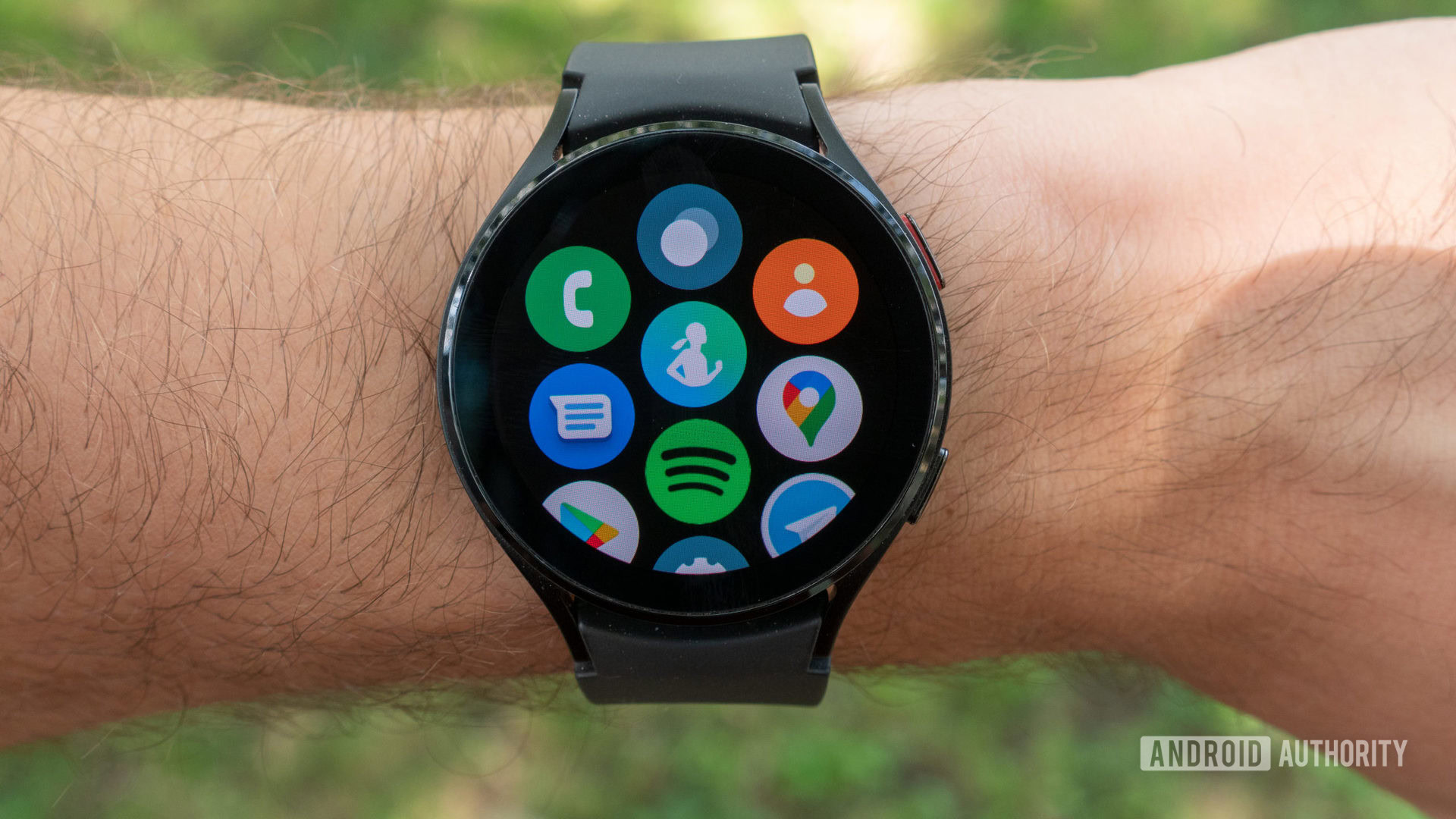
There are many things to talk about in design, health and fitness, and software, but the biggest change to the Galaxy Watch lineup is its updated Wear OS. You’ll find a detailed breakdown in our Galaxy Watch 4 review, but here are some highlights.
The Galaxy Watch 4 series runs on Google’s Wear OS platform with Samsung’s One UI Watch overlay. This was the first time Google allowed OEMs to customize the look and feel of the smartwatch platform. As such, the software on Samsung’s watches looks much more like the version of One UI that appears on its smartphones. That could be a good or a bad thing, depending on how you feel about Samsung’s design language. Still, it allows for more customization options throughout the entire OS.
Thanks to the Wear OS software, the latest Galaxy Watches also sync important settings from your paired smartphone and auto-install compatible smartphone apps on your watch. Speaking of apps, the addition of Wear OS means more Google apps are now available on Samsung’s smartwatches. There’s YouTube Music with offline listening support, Google Maps for turn-by-turn directions, as well as other popular Wear OS staples like Strava, Adidas Running, and more.
Additionally, Samsung Pay is available on both Galaxy Watch 4 models. Users can also download Google Pay if they’d rather use Google’s payment service. Unfortunately, there’s no MST support, so you’re working with NFC payments only. Users will also find a much larger app library than that of the Tizen platform. If you couldn’t find the right app on your older Samsung smartwatch, there’s a good chance it’ll be available on the Galaxy Watch 4.
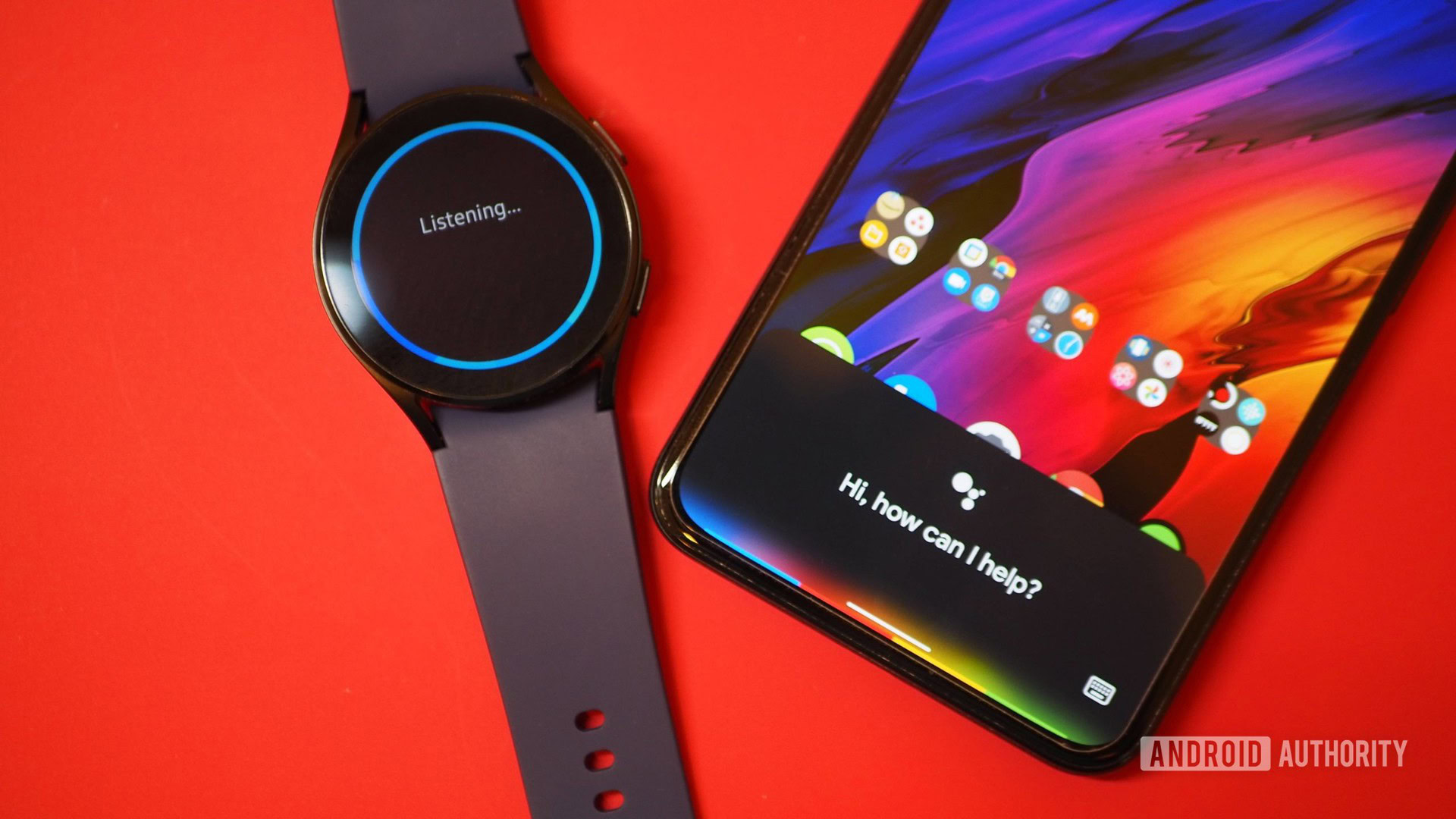
For those hoping for quick access to Google Assistant on the Galaxy Watch 4 series, it has arrived. While users didn’t find Google Assistant on their devices out of the box, it’s now available in addition to Bixby.
Wear OS 3’s redesigned on-screen gesture controls make it much easier to answer and dismiss calls and alerts. It also implemented a quick-access widget — accessible from the watch face — that lets you check your connected earbuds’ battery, manage touch controls, and change noise cancellation options straight from your watch. Also, the Galaxy Watch 4’s hardware buttons let you toggle between recent Galaxy Watch apps, just like on your phone.
What are some good Samsung Galaxy Watch 4 and Watch 4 Classic alternatives?
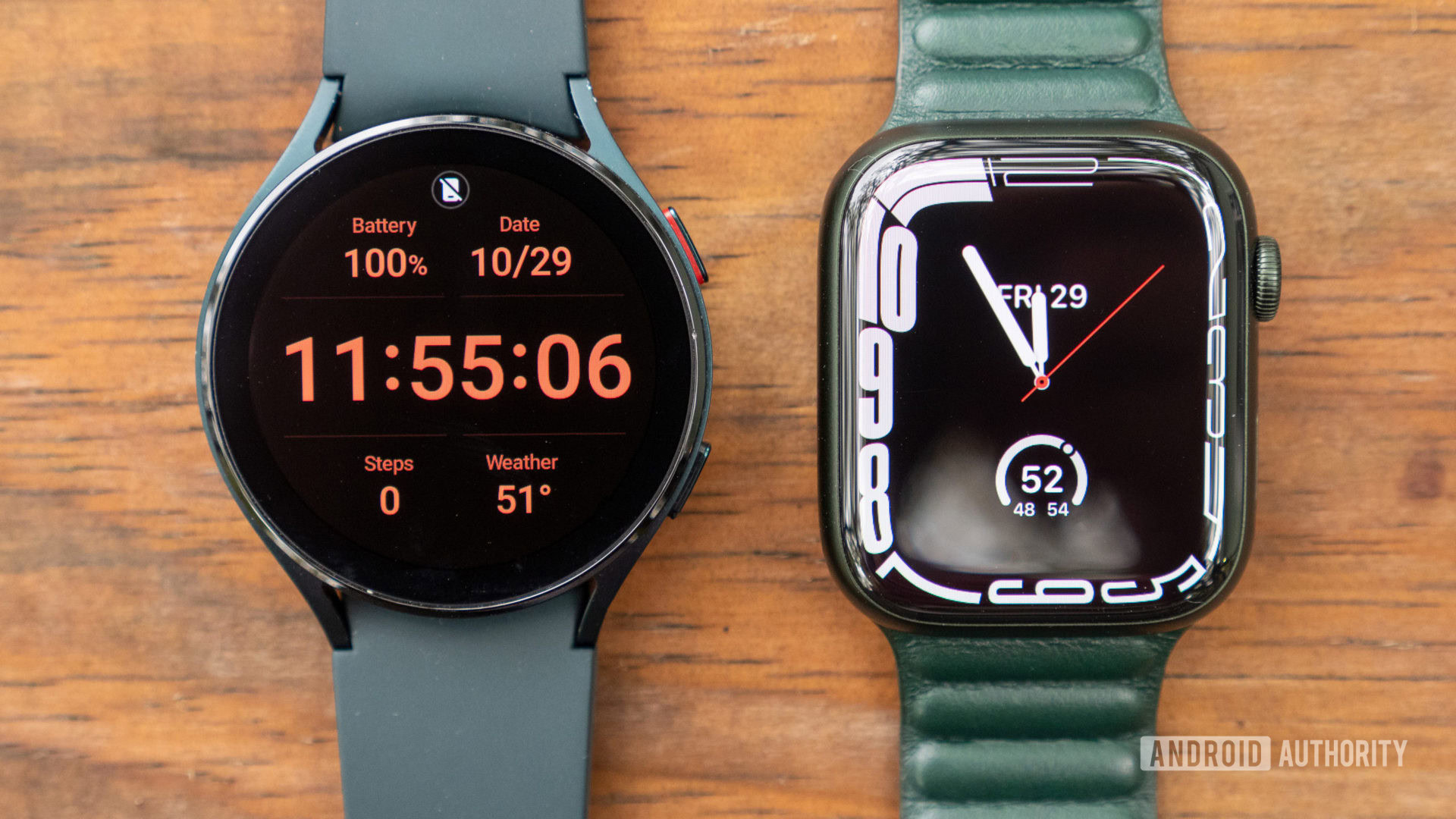
While the Samsung Galaxy Watch 4 and Watch 4 Classic seem pretty great, they’re not for everyone. Here are a few of our recommended alternatives:
- Galaxy Watch 6 series ($299.99 at Samsung and $429 at Amazon): The company’s latest flagship devices are the best base and Classic Samsung smartwatches you can buy. They feature larger screens and a few key upgrades.
- Galaxy Watch 5 Pro ($374 at Amazon): If you want the most durable Samsung device with the best battery, the Galaxy Watch 5 Pro is it. We were particularly impressed by the durability upgrades and new navigation features we tested during our review.
- Apple Watch Series 8 ($329 at Amazon): This one’s a no-brainer if you have an iPhone. For iOS users, the Apple Watch is hard to beat. The Apple Watch Series 8 outperforms the Galaxy Watch 4 in terms of fitness and smart features. It’s a seriously great wearable.
- Mobvoi TicWatch Pro 5 ($349 at Amazon): Mobvoi’s newest smartwatch brings a lot to the table, including the latest Wear OS software. The device also offers a powerful processor as well as Mobvoi’s signature dual-display for saving battery life.
- Google Pixel Watch ($329 at Amazon): Google’s first-ever smartwatch features a clean, futuristic design, speedy performance, and deep integration with Fitbit’s health and fitness tracking suite. It’s not a perfect device. However, it’s full of potential and is one of the leading options for Android users.
- Garmin Venu 2 Plus ($449 at Amazon): If you want a smartwatch that prioritizes accurate fitness and health stats, the Garmin Venu 2 Plus is a great option. It’s one of our favorite fitness watches of all time, thanks to its long feature set and relatively affordable price. It’s not as “smart” as the Galaxy Watch, though the inclusion of voice assistant and calling via Bluetooth certainly helps.
- Fossil Gen 6 ($188 at Amazon): The Fossil Gen 6 is the first to come with Qualcomm’s Snapdragon 4100 Plus. It also tacks on a new heart rate sensor, SpO2 tracking, and a faster-charging battery.
Samsung Galaxy Watch 4 and Watch 4 Classic pricing and availability




The Samsung Galaxy Watch 4 and Galaxy Watch 4 Classic are available at Samsung.com. You can also get them in stores and online through various retailers like Amazon, Best Buy, and more. The base model Galaxy Watch 4 devices are affordable, but pricing quickly increases with the higher-end models. You can also often find these devices on sale.
The standard Galaxy Watch 4 comes in Black, Silver, Green (exclusive to the 44mm model), and Pink Gold (exclusive to the 40mm model). The Galaxy Watch 4 Classic only comes in Black and Silver. You can also buy the LTE-connected Galaxy Watch 4 and Watch 4 Classic directly from US carriers.
Top Samsung Galaxy Watch 4 questions and answers

Yes! The Galaxy Watch 4 can both make and receive calls. However, you’ll have to make sure your watch is either connected to your phone via Bluetooth or has a mobile network connection.
The Galaxy Watch 4 Classic comes in both GPS and LTE models. You’ll have to pay a bit more for the LTE version if you plan to leave your phone behind while working out.
Yes and no. Technically, the Samsung Galaxy Watch 4 (non-Classic model) is the successor to the Galaxy Watch Active 2. Now it just has a simpler name. You’ll want to buy the vanilla Galaxy Watch 4 if you plan to use the watch for sports and outdoor activities. The Galaxy Watch 4 Classic is for those who favor aesthetics.
Yes, the Galaxy Watch 4 was the first smartwatch to run Wear OS 3. Samsung’s software overlay is called One UI Watch. This skin makes the operating system look much more like the software on a Galaxy smartphone.
According to Samsung, the Galaxy Watch 4 takes “under two hours” to reach a 100% charge. 30 minutes on the charger gives you around 10 hours of use.
No. While certain Samsung Galaxy 4 models offer 4G LTE connectivity, 5G is not supported. Samsung says that the data sent between smartwatches is quite small, so LTE is more suitable than 5G.
No, the Samsung Galaxy Watch 4 does not work with iPhones. However, alternative Wear OS 3 devices from Fossil do support iPhones.
Yes, depending on your phone. As long as your smartphone supports Samsung’s Wireless PowerShare you can use it to charge your Galaxy Watch 4.
Unfortunately, the Samsung Galaxy Watch 4 cannot monitor blood glucose levels, as was once rumored.